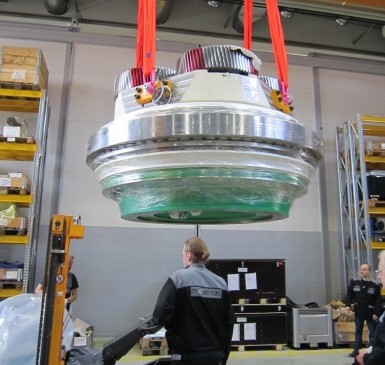
With climate change increasingly recognised as a social and economic challenge, the need for significant public and private investment in the renewable energy sector was a hot topic at the Rio+20 corporate sustainability forum. The event, which took place 20 years after the landmark 1992 Earth Summit in Rio de Janeiro, saw world leaders – along with participants from the private sector, NGOs and other groups – come together to discuss how to build an economy around the principles of sustainable development.
“Given the huge, and indeed increasing, financing requirements of the renewable energy sector, it is clear that funding must go beyond that provided by traditional sources such as utilities and financial institutions,” said Regina Nunes, Head of South Cone Latin America for Standard & Poor’s Ratings, at a Rio+20 panel discussion this week. “Meeting financing targets requires an unprecedented level of investment, and success will rely heavily on attracting an increasing number of other investor pools – including private equity, pension funds and the capital markets.”
The panel – which also included Nick Robins (Head of Climate Change, HSBC), Chad Holliday (Chairman, Bank of America), Michael Liebreich (CEO., Bloomberg New Energy Finance), Peter Hoeppe (Head Geo Risks research, Munich Re.) and Rashad Kaldany, (VP Global Industries, IFC) – agreed that the need for private investment in renewables will become challenging as the impact of the Basel III and Solvency II regulations increases in the three to five years.
Basel III, for instance, will increase the capital charge for banks holding long-duration loans and thus provide an incentive to rotate capital. Combined with the trend of bank downgrades this could reduce the amounts and increase the costs of long-term bank lending. For instance, S&P estimates that eurozone corporate borrowers could see annual additional interest costs of almost US$50 billion under Basel III (assuming a bank return on equity target of 10%). The panel suggested that meeting the global clean energy challenge therefore requires extensive collaboration between banks, insurance companies, energy utilities and governments.
Nunes stressed: “Renewable energy projects have often been considered high risk given their reliance on government support and relative immaturity, accentuated by the difficulty in measuring their revenue streams in comparison with other investments. Our role as a ratings agency is to be completely transparent about what the risks are, and to provide insight on structures that may facilitate financing in these areas.”
“Indeed, to date, the ability of institutional investors, pension funds and the capital markets to access clean energy investments has been somewhat limited, given the small secondary debt markets and the absence of large volumes of liquid, investment-grade securities.”
In this respect, there is hope that long-term renewable energy fixed income debt securities, otherwise known as “green bonds”, may spark some interest. Indeed, the green bond market has seen its initial US$17million worth of issuance snapped up by the market – especially by institutional investors and pension funds keen to comply with their corporate social responsibility mandates. The majority of these bonds have been issued by multi-lateral agencies or banks and have, as such, mostly come with AAA ratings. While the initial interest is promising, it is not enough given the incremental financing requirements of the sector – which according to the IEA amounts to approximately US$1 trillion per year globally until 2030.
Projects such as Topaz Solar Farms – which at US$2.44billion, is the largest solar project financed in the US capital markets without Department of Energy loans or guarantees – may therefore provide the blueprint going forward. In this case, S&P assigned a ‘BBB-’ rating to US$700 million of unsecured notes. The ‘BBB-’ credit profile was assigned on the back of the fact it used a proven panel technology, with low operational and maintenance risk, as well as the construction being made under an Engineering, Procurement and Construction contract with a subsidiary of proven contractor First Solar Inc. This included incentives to achieve completion and with a contingency equal to 44% of non-fixed costs. On the flipside, S&P accounted for the fact that the project had high counterparty risk exposure to First Solar, which had a credit profile below Topaz’s.
Nunes believes that such financing structures may provide the answer to the clean energy financing challenge. “Investors are increasingly looking for fixed income instruments that provide yield without going too far down the credit curve. It is very much a trade off between risk and yield, and while previously they may have looked for bonds rated ‘BBB’, I think there is a sense that ‘A’ rated investments are now becoming the new minimum standard required,” she explained. “Sometimes private or public credit enhancement is needed to create project-backed bonds with an ‘A’ rating, although they can also achieve this from the outset if well-structured, less leveraged and with better support mechanisms from key project counterparties.”
For additional information:

